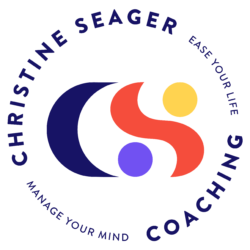Why this happens– and how to shift it, even in the middle of a stressful shift or a rare day off.
Have you ever said something and immediately thought, ‘Wait… did I really just say that out loud?“
That was me at the beach recently.
I was filming a peaceful video—panning across the palm trees, taking in the sunshine—and I heard myself say,
“At least there’s good music.”
Not in a joyful way.
More like a resigned, mildly irritated way.
I had time at the beach with Scott.
It was sunny, beautiful, warm.
And yet—my brain still found something to complain about.
Sound familiar?
As healthcare workers (and as simply human beings), we’re trained to notice what’s wrong.
What’s missing.
What’s abnormal.
It makes sense that this mindset doesn’t shut off just because we’re off shift.
Our brains—especially under stress—default to scanning for danger, risk, or imperfection.
It’s called negativity bias. And it’s completely normal.
You’re not doing it wrong.
You’re not “too” negative or ungrateful.
You’re just human.
What matters is what you do next.
After I heard myself say that out loud, I didn’t beat myself up.
I caught it.
I got curious.
And then I did what I often teach my clients to do:
I went on a rampage of gratitude.
It’s exactly what it sounds like—a no-edit, rapid-fire list of anything and everything I could possibly appreciate in that moment.
- The breeze.
- The sand.
- The fact that I had a phone to film with.
- That yes—the music actually was good.
- And that I had the awareness to notice my brain doing what brains do… and make a different choice.
That’s how we rewire.
This works on the beach.
It works in your car.
It works in the hallway between patient rooms.
It works after a hard day when you’re questioning everything.
When a negative thought shows up, don’t judge it.
Just notice it.
Name it.
And then redirect—on purpose.
Start small.
Look for one thing that’s good.
Then two.
Then five.
This is how you shift from reactive mode to intentional mode.
It’s how you start managing your mind in a way that doesn’t add more pressure—but gives you a little more space to breathe.
Because you deserve that.
Even when the floor is short-staffed.
Even when your day feels like a dumpster fire.
Even when you’re on a beach and your brain still complains.
This isn’t fake positivity.
It’s a skill. One you can build.
Want to try it? Start your own rampage of gratitude.
Right now.
Wherever you are.
List five things—quick, simple, no editing.
Notice what shifts.
You don’t need a perfect day to feel better.
You just need a strategy for when your brain wants to focus on what’s not.
Reminder: As part of the benefits offered at Logan Health, employees get free coaching sessions.
You can book a coaching session here.
Or, if you are not a Logan Health employee, you can book a consultation to learn how to work with me here.
P.P.S. Liked what you read?
Join my email list where I dive deeper into these concepts and teach you how to put them into practice in your everyday life.
And don’t forget to follow me on Instagram @christineseager_ or Facebook @seager.christine, where I share both teaching moments and real-life examples of this work in action.
Real moment from the beach (and yes, I really said it out loud).
